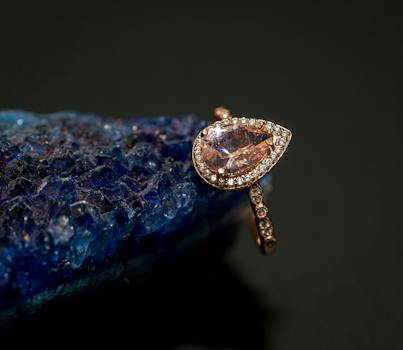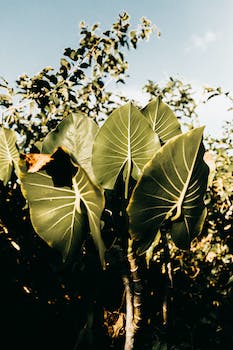

-
Table of Contents
Uncovering Hidden Treasures: A Guide to Finding Valuable Gems - Discover the Secrets of Precious Stones
Introduction
Introduction:
"Uncovering Hidden Treasures: A Guide to Finding Valuable Gems" is a comprehensive resource designed to assist gem enthusiasts, collectors, and aspiring treasure hunters in their quest to discover valuable gems. This guide provides valuable insights, tips, and techniques to help individuals navigate the world of gemstone identification, mining locations, and market trends. Whether you are a novice or an experienced gem hunter, this guide aims to equip you with the knowledge and tools necessary to uncover hidden gems and unlock their true value.
The History and Significance of Gemstones: Unveiling the Stories Behind Precious Gems
Uncovering Hidden Treasures: A Guide to Finding Valuable Gems
Gemstones have captivated humanity for centuries, their allure and beauty transcending time and culture. These precious stones have been treasured and sought after for their rarity, durability, and aesthetic appeal. But beyond their physical attributes, gemstones hold a rich history and significance that adds to their value. In this section, we will delve into the fascinating world of gemstones, unveiling the stories behind these precious gems.
The history of gemstones dates back thousands of years, with evidence of their use in ancient civilizations such as Egypt, Mesopotamia, and India. These early societies believed that gemstones possessed mystical powers and used them for various purposes, including protection, healing, and spiritual rituals. Gemstones were also associated with wealth and power, often adorning the crowns and jewelry of royalty and nobility.
One of the most famous gemstones in history is the Hope Diamond. This stunning blue diamond, weighing a remarkable 45.52 carats, has a captivating story that spans centuries. It is said to have been discovered in India and was later acquired by French gem merchant Jean-Baptiste Tavernier. The diamond changed hands multiple times, eventually falling into the possession of Henry Philip Hope, from whom it gets its name. The Hope Diamond is not only renowned for its size and beauty but also for the supposed curse that accompanies it, bringing misfortune to its owners.
Another gemstone with a fascinating history is the Koh-i-Noor diamond. This diamond, which means "Mountain of Light" in Persian, has a tumultuous past that includes being looted, stolen, and fought over by various rulers. It was believed to have been mined in India and was once the largest known diamond in the world. Today, the Koh-i-Noor diamond is part of the British Crown Jewels and is displayed in the Tower of London.
Gemstones have also played a significant role in mythology and folklore. In ancient Greece, for example, the amethyst was believed to protect against drunkenness and promote sobriety. The emerald was associated with fertility and rebirth in ancient Egypt, while the ruby was considered the stone of passion and love. These stories and beliefs have been passed down through generations, adding to the allure and symbolism of gemstones.
In addition to their historical and cultural significance, gemstones are valued for their rarity and quality. The value of a gemstone is determined by several factors, including its color, clarity, cut, and carat weight. The most valuable gemstones are those that exhibit intense and vibrant colors, such as the deep blue of a sapphire or the vivid green of an emerald. Clarity refers to the absence of internal flaws or inclusions, while the cut determines how well the stone reflects light. Carat weight, on the other hand, refers to the size of the gemstone.
Gemstones are found in various parts of the world, with each region known for producing specific types of gems. For example, Colombia is renowned for its emeralds, while Burma is famous for its rubies. Other notable gemstone-producing countries include Brazil, Sri Lanka, and Tanzania. Gemstones can be found in mines, rivers, and even on the ocean floor, and the process of mining and extracting these precious stones requires great skill and expertise.
In conclusion, gemstones are not just beautiful adornments; they hold a rich history and significance that adds to their value. From the mystical powers attributed to them in ancient civilizations to the stories of curses and conquests associated with famous gemstones, these precious gems have captivated humanity for centuries. Whether you are a collector, a jewelry enthusiast, or simply someone who appreciates the beauty of gemstones, understanding their history and significance can deepen your appreciation for these hidden treasures.
Techniques and Tools for Gemstone Hunting: A Comprehensive Guide for Beginners

Gemstone hunting can be an exciting and rewarding hobby for beginners. The thrill of uncovering hidden treasures, such as valuable gems, is unmatched. However, to be successful in this endeavor, it is essential to have the right techniques and tools at your disposal. In this comprehensive guide, we will explore various techniques and tools that can help beginners in their quest for valuable gemstones.
One of the most important techniques for gemstone hunting is research. Before heading out into the field, it is crucial to gather information about the types of gemstones that can be found in your area. This will give you a better understanding of what to look for and where to look. Local geological surveys, books, and online resources can provide valuable insights into the geological formations and gemstone deposits in your region.
Once you have done your research, it is time to choose the right tools for the job. A good quality rock hammer is a must-have tool for gemstone hunting. It allows you to break open rocks and expose potential gemstone deposits. Additionally, a chisel and a pry bar can be useful for extracting gemstones from hard rock formations. A sturdy backpack is also essential for carrying your tools and any gemstones you may find.
When it comes to the actual hunting process, there are several techniques that can increase your chances of finding valuable gemstones. One popular technique is known as "streaming." This involves searching for gemstones in riverbeds and streams. The flowing water can wash away dirt and expose gemstones that have been eroded from their original source. Using a sieve or a gold pan, you can sift through the sediment and separate the gemstones from the debris.
Another technique is known as "surface searching." This involves visually scanning the ground for gemstones that have been weathered out of their host rocks. Gemstones like opals and garnets are often found on the surface, especially after heavy rains or erosion. It is important to keep an eye out for any unusual colors or shapes that may indicate the presence of a gemstone.
In addition to these techniques, it is crucial to be mindful of the environment and any regulations that may apply to gemstone hunting in your area. Always obtain the necessary permits and follow any guidelines set by local authorities. It is also important to respect private property and obtain permission before entering any private land.
Lastly, patience and perseverance are key qualities for successful gemstone hunting. It may take time and effort before you find your first valuable gemstone. However, with practice and experience, your skills will improve, and you will become more adept at identifying potential gemstone deposits.
In conclusion, gemstone hunting can be a fascinating and rewarding hobby for beginners. By conducting thorough research, choosing the right tools, and employing various techniques, you can increase your chances of finding valuable gemstones. Remember to always be mindful of the environment and any regulations that apply to gemstone hunting in your area. With patience and perseverance, you may uncover hidden treasures that will leave you in awe of the natural beauty that lies beneath the surface.
Identifying and Evaluating Valuable Gems: Tips and Tricks for Uncovering Hidden Treasures
Uncovering Hidden Treasures: A Guide to Finding Valuable Gems
Identifying and Evaluating Valuable Gems: Tips and Tricks for Uncovering Hidden Treasures
When it comes to gemstones, there is a world of hidden treasures waiting to be discovered. From dazzling diamonds to vibrant rubies, these precious gems hold both monetary and sentimental value. However, not all gems are created equal, and it takes a trained eye to identify and evaluate their worth. In this guide, we will explore some tips and tricks for uncovering valuable gems.
The first step in identifying valuable gems is to familiarize yourself with the different types of gemstones. From the classic diamond to the lesser-known tanzanite, each gem has its own unique characteristics and value. By studying gemology, you can learn about the various properties that determine a gem's worth, such as color, clarity, cut, and carat weight.
Color is one of the most important factors when evaluating a gemstone. For example, a diamond's value is greatly influenced by its color, with the most valuable diamonds being completely colorless. On the other hand, colored gemstones like rubies and sapphires are prized for their vibrant hues. It is essential to train your eye to recognize the subtle differences in color that can greatly affect a gem's value.
Clarity refers to the presence of any internal or external flaws, known as inclusions and blemishes, respectively. The fewer inclusions and blemishes a gem has, the higher its clarity grade and value. However, it is important to note that some gemstones, like emeralds, are known for their characteristic inclusions, which can actually enhance their beauty and value.
The cut of a gemstone refers to its shape and how well it has been faceted. A well-cut gemstone will reflect light in a way that maximizes its brilliance and sparkle. The quality of the cut can greatly impact a gem's value, as a poorly cut stone will appear dull and lifeless. It is crucial to examine a gemstone's cut under different lighting conditions to fully appreciate its beauty.
Carat weight is perhaps the most well-known factor when it comes to evaluating a gem's value. However, it is important to remember that carat weight alone does not determine a gem's worth. A smaller gem of exceptional quality may be more valuable than a larger gem with inferior characteristics. It is essential to consider all the factors mentioned earlier when evaluating a gem's worth.
In addition to these factors, it is also important to consider the origin and rarity of a gemstone. Some gemstones, like Kashmir sapphires and Burmese rubies, are highly sought after due to their limited availability. Gems from certain regions may also have unique characteristics that make them more valuable. It is crucial to do thorough research and consult with experts to determine the origin and rarity of a gemstone.
In conclusion, identifying and evaluating valuable gems requires a combination of knowledge, experience, and attention to detail. By familiarizing yourself with the different types of gemstones and their characteristics, you can begin to uncover hidden treasures. Remember to consider factors such as color, clarity, cut, carat weight, origin, and rarity when evaluating a gem's worth. With practice and patience, you can become a skilled gemstone connoisseur and uncover valuable gems that will truly dazzle.
Q&A
1. What is "Uncovering Hidden Treasures: A Guide to Finding Valuable Gems" about?
"Uncovering Hidden Treasures: A Guide to Finding Valuable Gems" is a book that provides guidance and information on how to locate and identify valuable gemstones.
2. Who is the author of "Uncovering Hidden Treasures: A Guide to Finding Valuable Gems"?
The author of "Uncovering Hidden Treasures: A Guide to Finding Valuable Gems" is not specified in the question.
3. What can readers expect to learn from "Uncovering Hidden Treasures: A Guide to Finding Valuable Gems"?
Readers can expect to learn techniques for locating gemstone deposits, identifying different types of gems, evaluating their quality and value, and understanding the market for gemstones.
Conclusion
In conclusion, "Uncovering Hidden Treasures: A Guide to Finding Valuable Gems" provides valuable insights and practical tips for individuals interested in gemstone hunting. The book covers various aspects such as identifying gemstones, understanding their value, and locating potential sources. With its comprehensive information and expert advice, this guide serves as a valuable resource for both beginners and experienced gem enthusiasts looking to uncover hidden treasures and expand their knowledge in the world of valuable gems.












